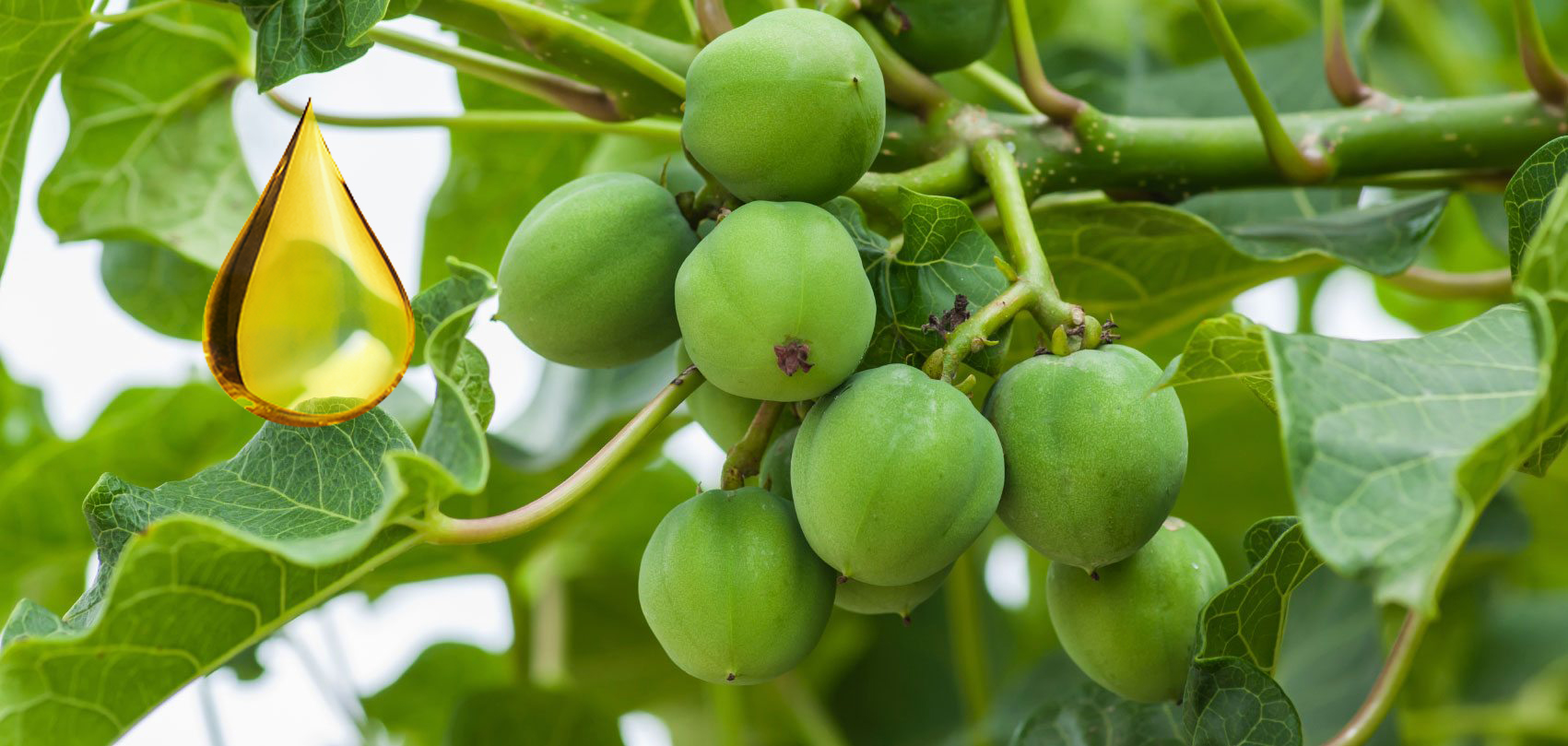
Jatropha Tree Curcas grows almost anywhere, even on gravelly, sandy and saline soils. It can thrive on the poorest stony soil. It can grow even in the crevices of rocks. The organic matter from shed leaves enhance earth-worm activity in the soil around the root-zone of the plants, which improves the fertility of the soil. Jatropha Tree is found in the tropics and subtropics and likes heat, although it does well even in lower temperatures and can withstand a light frost. Its water requirement is extremely low and it can stand long periods of drought by shedding most of its leaves to reduce transpiration loss.
Jatropha Curcus is a drought-resistant perennial, growing well in marginal/poor soil. It is easy to establish, grows relatively quickly and lives, producing seeds for 40 years. Jatropha the wonder plant produces seeds with an oil content of 37%. The oil is a fuel which burns with a clear smoke-free flame. This oil once processed (through esterification) into bio-diesel is increasingly being used as a fuel by transport and energy companies. The by-products are pressed cake (a good organic fertilizer), oil, and it also contains an effective insecticide.It grows in many parts of Ghana and other parts of Africa. It is rugged in nature and can survive with minimum inputs and is easy to propagate. Jatropha grows wild in many areas of Africa and even thrives on poor soil. A good crop can be obtained with little effort. Depending on soil quality and rainfall, oil can be extracted from the Jatropha nuts after two to three years. The annual seed yield ranges from 0.5 to 12 tons per hectare.
It is a small tree or shrub with smooth gray bark, which exudes a whitish colored, watery, latex when cut. Normally, it grows between three and five meters in height, but can attain a height of up to eight or ten meters under favourable conditions.
Leaves
It has large green to pale-green leaves.
Flowers
Flowers are formed larger and occur in the hot seasons. In conditions where continuous growth occurs.
Fruits
Fruits are produced in winter when the shrub is leafless, or it may produce several crops during the year if soil moisture is good and temperatures are sufficiently high.
Seeds
The seeds become mature when the capsule changes from green to yellow, after two to four months
Uses
Jatropha oil can be used as an alternate of other oils for Bio-diesel production.
| Standard Specifications | |
| Acid value | 5.65 |
| FFA (As Oleic Acid ) | 2.79 |
| Saponification value | 195.0 |
| Iodine value (WIJS) | 101.76 |
| Viscosity (31oC) | 43.20 cps |
| Palmitic acid | 15.74 % |
| Stearic acid | 5.13 % |
| Oleic acid | 34.77 % |
| Linoleic acid | 40.50 % |
| Other acids | 3.86 % |